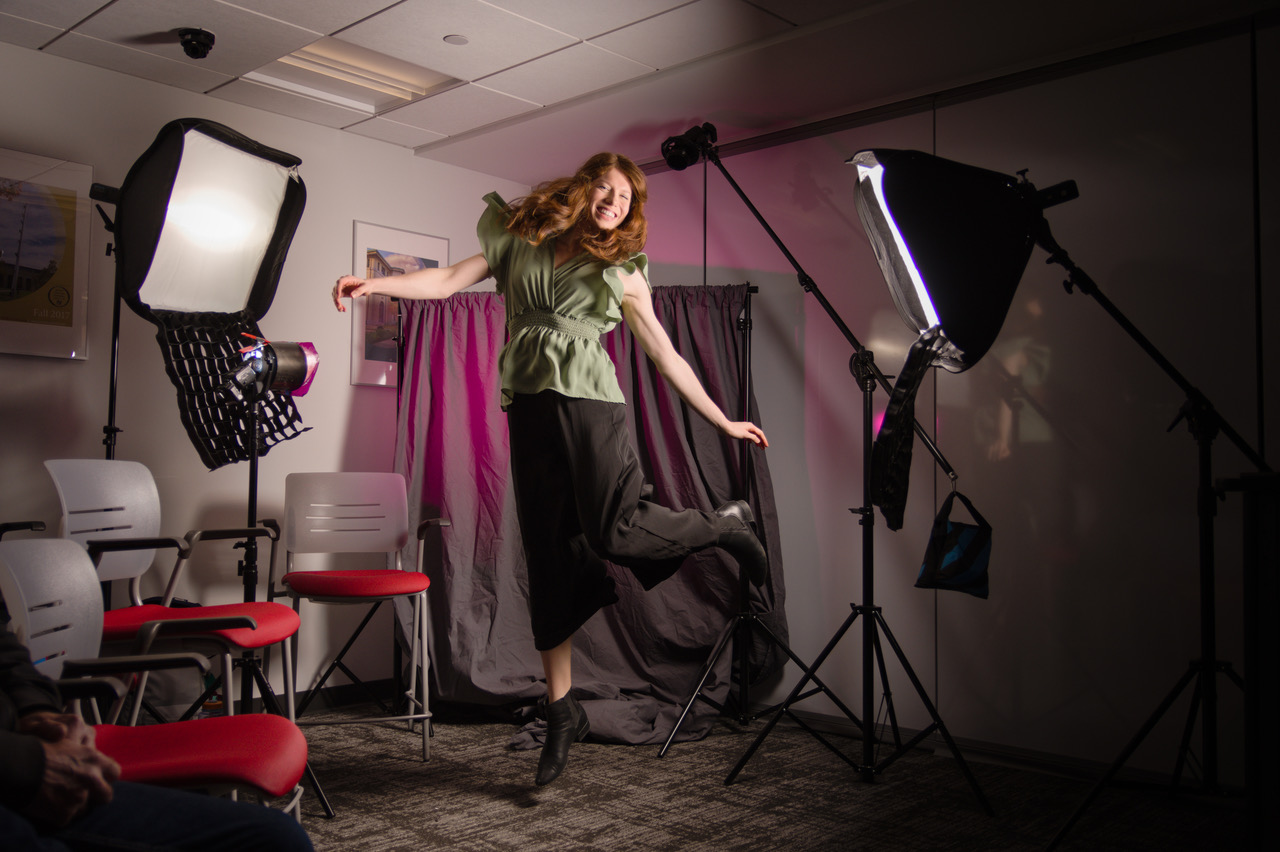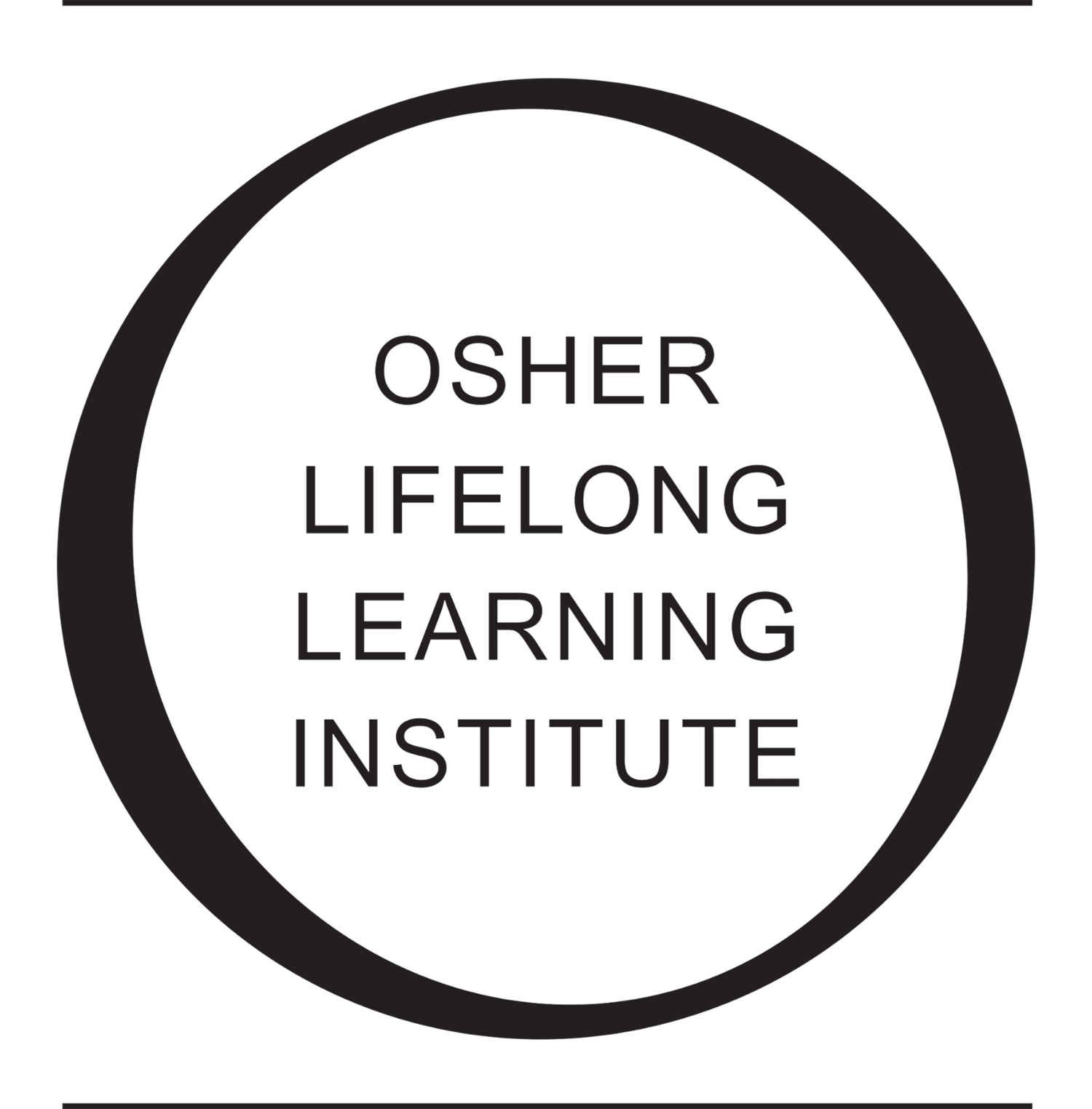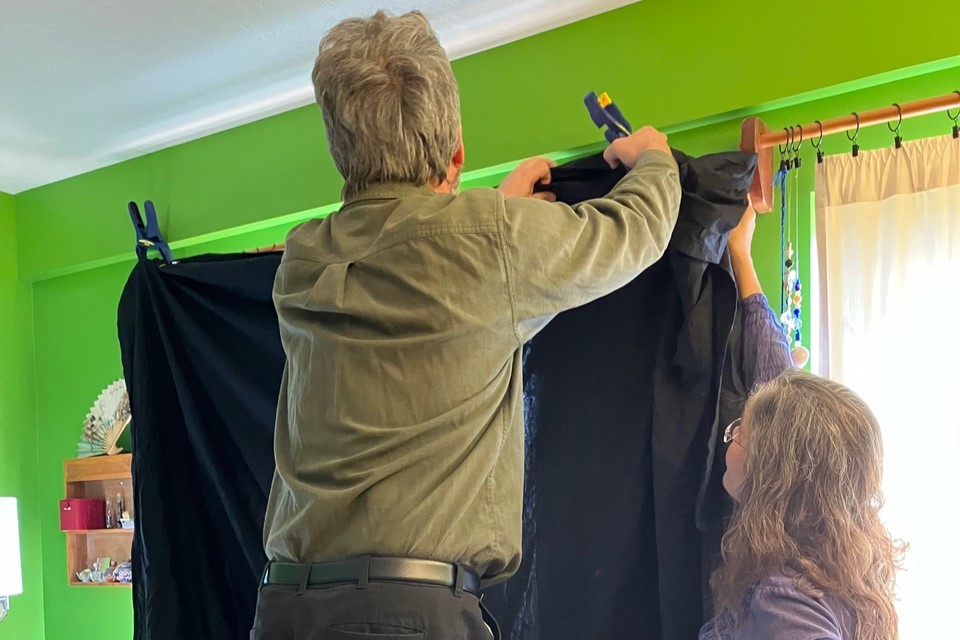
Osher at CMU Profile: David and Betsy Bangley, written by Marlene Parrish
Here’s me taking a grab-and-shoot picture of you using my Apple Smart phone: “Okay, smile. Say cheese. Aw, you blinked. Ok, say cheese. Great. Click.”Here’s David Bangley taking a portrait photograph of me. “Stand right about here.” Long pause while he turns his attention to equipment and a Nikon, of course. He twists a thing, wiggles something else, winks an eye into the back of the camera. Then he hands a flexible round metal reflector to his wife, Betsy, and says to her, “Here. No, back up a little. There. That’s good.” To me, he says, “Please look at the lens.” (I haven’t moved). “Tilt your head a bit the left.” Click.
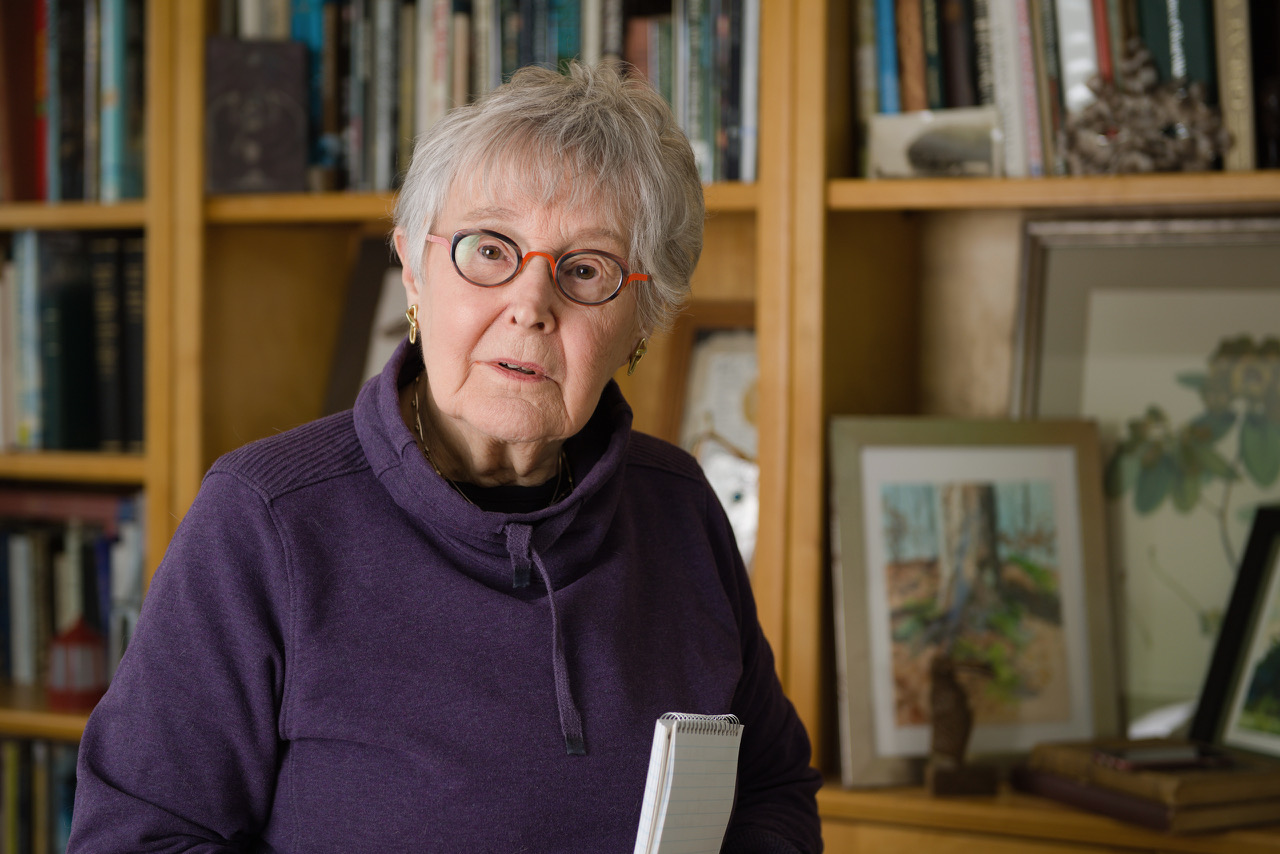
“Now lets take a night shot,” David says to me. “You stay where you are, and I’ll make it look like the only light is from street lights, and you are sneaking into our library.” To Betsy, he says, “Let’s black out the windows.” He leaves, returning with an armful of black fabric. Shoes on, he jumps up onto the couch to cover a double-width window with a sort of bedspread-schmatta, attaching it with clamps. For a “window”, he fastens a piece of matte cardboard, cut-out with a pattern for mullions. All lights off, the room gets spooky dark. A few more fussings, a couple of directions to me, and click. I look like an intruder or robber or worse.
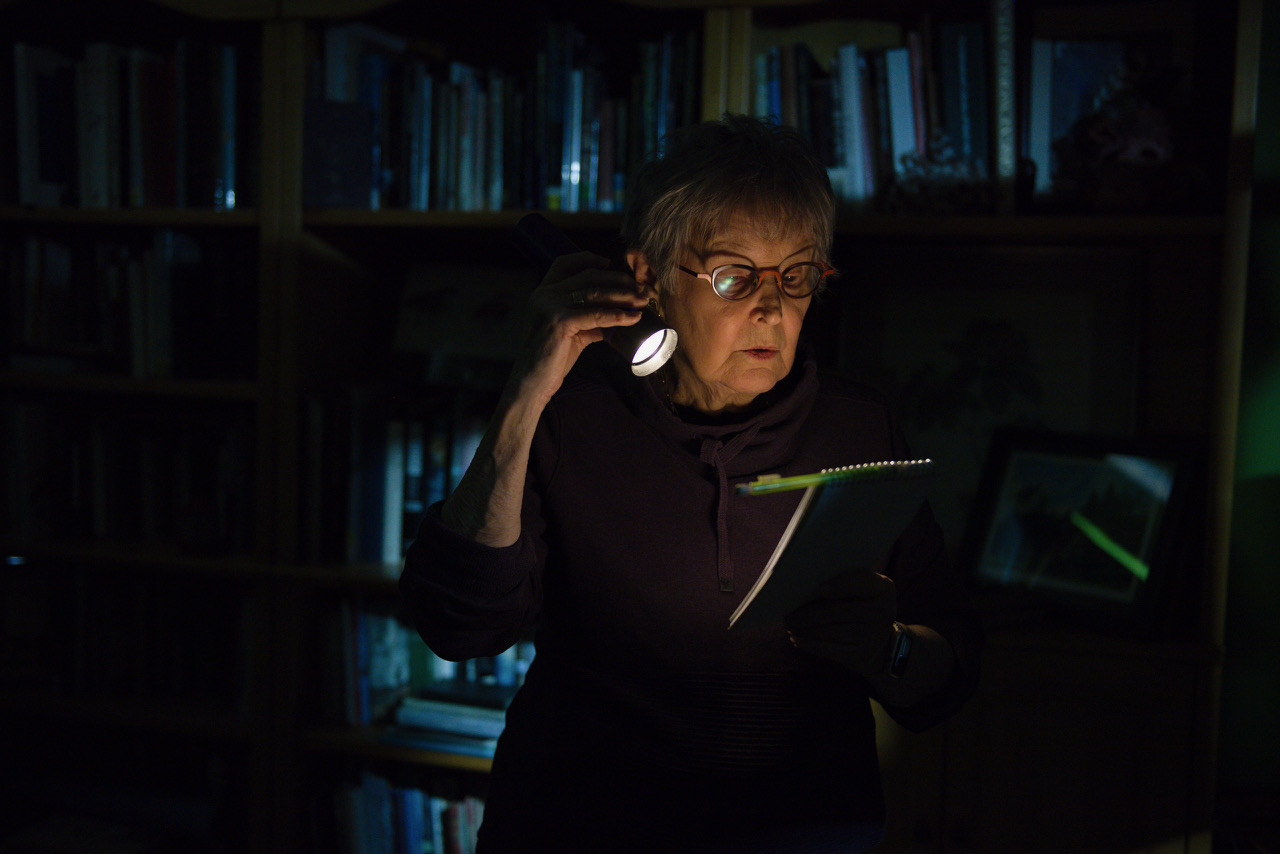
Later, he explains what happened in those few moments:
Daytime shot: “I used a Nikon D5 with 2016 technology. Natural window light is assisted by bouncing an electronic flash off the white reflector that Betsy was holding. The white reflector diffuses the flash illumination to make it look softer like window light. Adding flash illumination provides emphasis on the subject through brightness, and controls the direction and intensity of shadows.” Oh.
Nighttime shot: “The windows have been covered. Illumination of the subject (me) comes from the surface of the notebook, which is illuminated by a flashlight. Background illumination is provided by a low intensity electronic flash projected through a window cutout pattern. The color difference between the warm flashlight bulb and cool electronic flash provides the illusion of a street light coming through a window late at night. Digital cameras can capture photographs in dim light. This exposure required only 1/30th of a second.” Ahh.
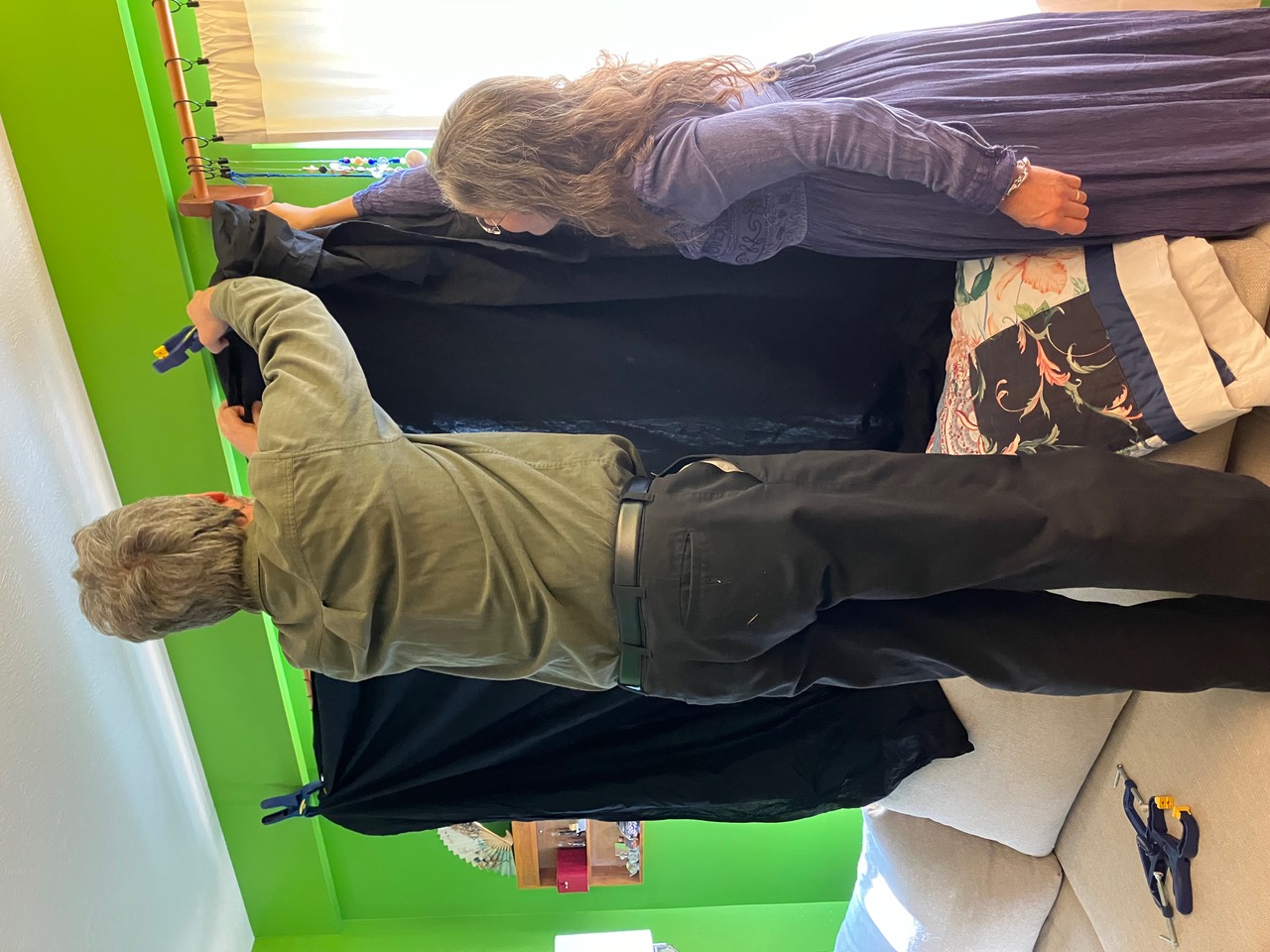
David and Betsy Bangley live in Georgetown, a borough in Beaver County along the Ohio River, both of them coming to the area by way of Virginia and Toledo. In 2012, they designed and built Hawk’s Hill Farm on the very top of a knob of land, surrounded by 11 acres of rolling hills, grassy fields with no neighboring homes to be seen. Their forever home. Should you squint at a ridge yonder, you can see West Virginia. They are a half an hour from a decent grocery store and gas station.
The interior of their house is unique. Enter the front door, hang a left and go down the stairs to a “landing.” A few steps below that, there’s a living space.
The landing is used as a stage; it’s eight by eight feet with a four by four foot corner missing due to the stairs,. At each side, heavy burgundy curtains are hanging on a pole ready to be yanked into place instead of raised and lowered. In theaters, there is usually what’s called a “fly loft” above the stage where lights are placed and where scenery, such as painted backdrops, can be suspended and then lowered to the stage floor. David built a simpler compact fly space high above the stage and secured professional lighting equipment. Another row of lighting equipment faces the stage from the living space. Friends with musical talents can perform there. Actors can act there. Models can pose there.
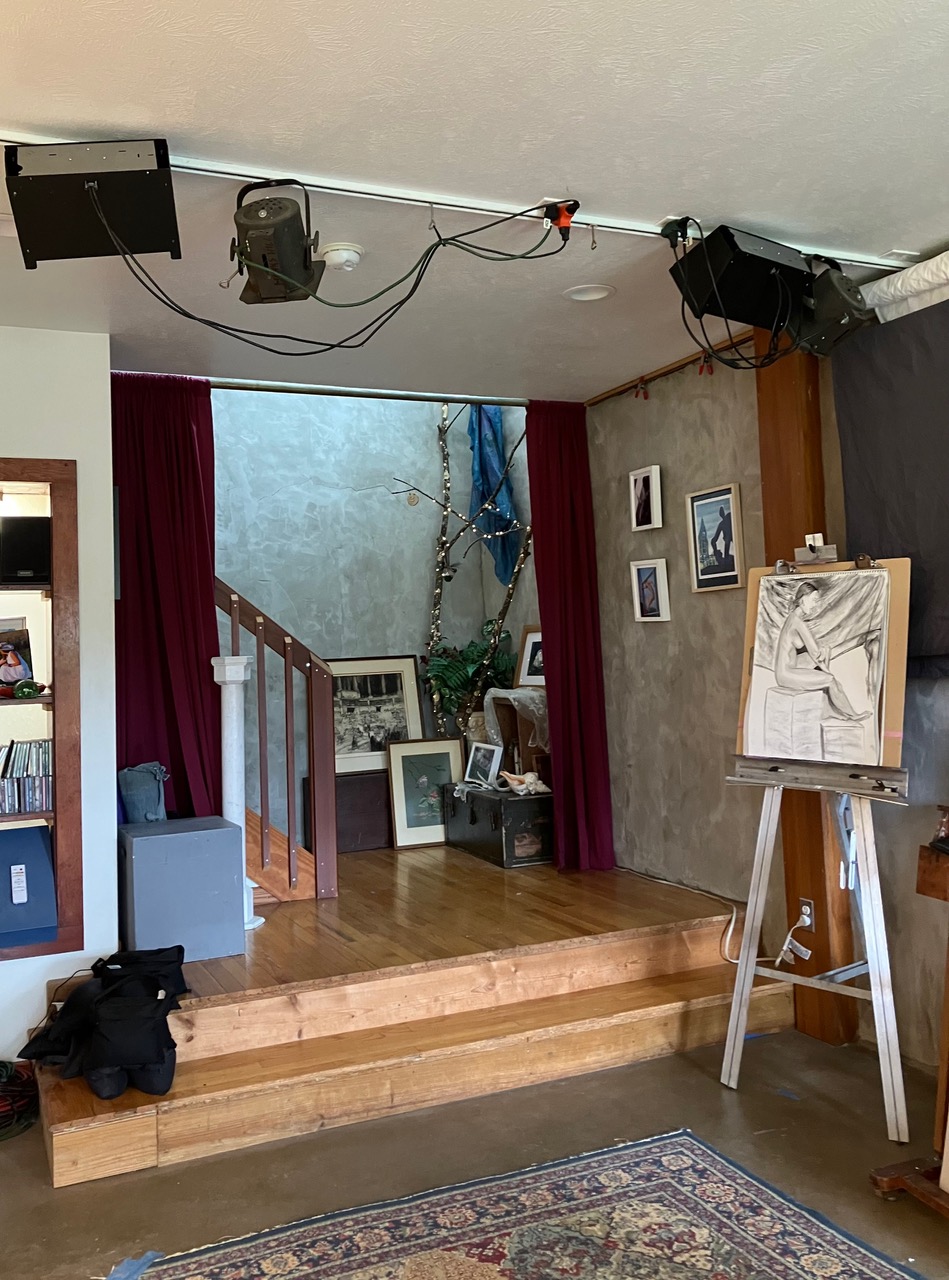
The main room is a fabulous chaos of easels, sketch pads, paintings, stacks of books, CDs, props and a huge pregnant fig tree. Betsy’s command center focuses the room, packed with her paintings and sketches, easels, paint pots, brush pots, pencil pots and pots with feathers in them. This is her happy place where she she thinks and plans, writes in her journal and plans art projects. Off to side, seedlings sprout on shelves under grow lights, soon ready for planting. A black cat, Grover, saunters about, barely tolerating a visitor.
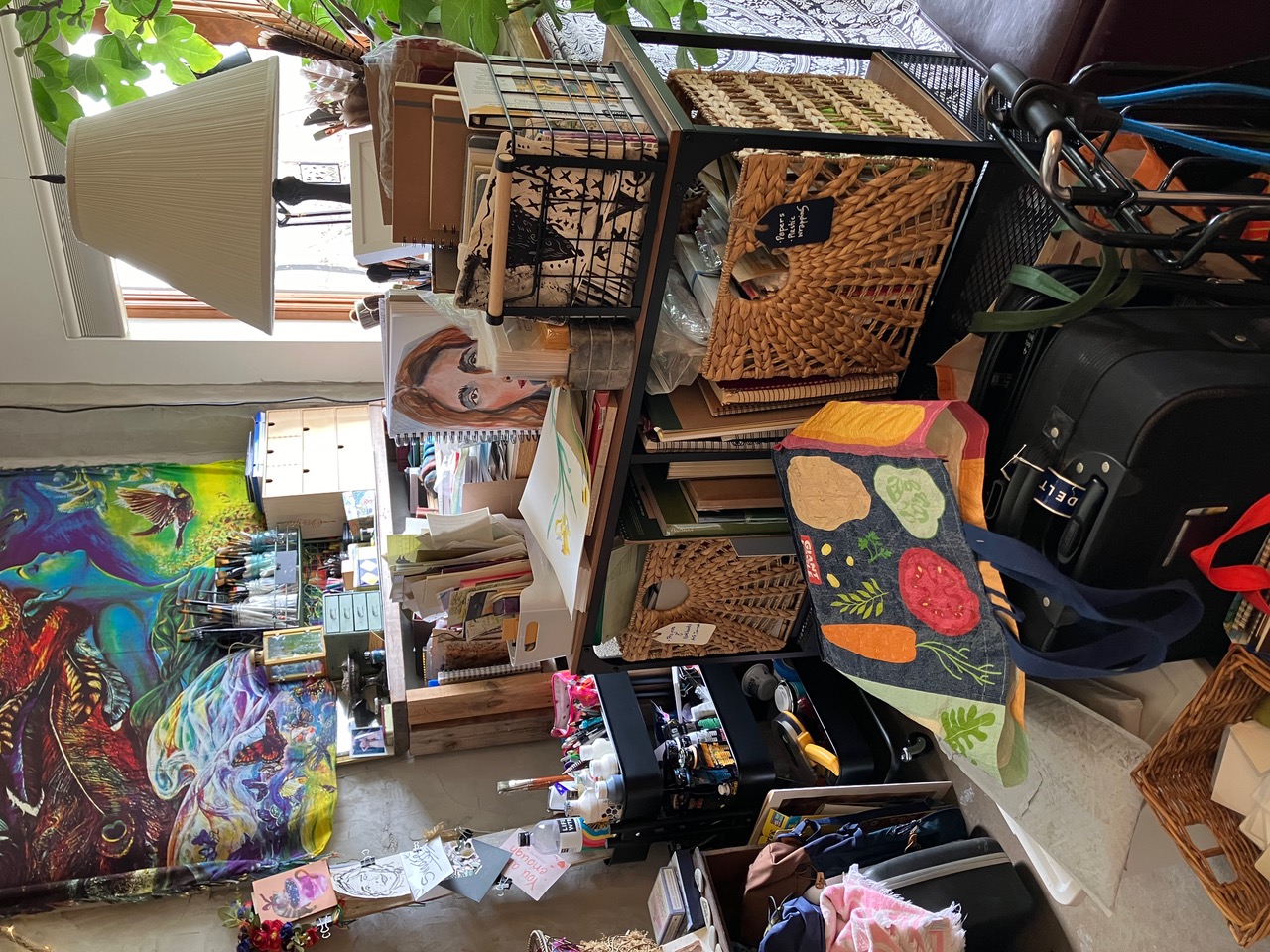
David and Betsy Bangley are a power couple, art division. They emit creativity, happiness and an aura of contentment with both each other and with life. He is tall and handsome, slim with salt and pepper hair, quick-witted and easy to smile. He’s the photographer, a techie, a teacher. She is naturally beautiful, a painter, a model, a naturalist and a teacher, too. They have two grown daughters.
Like most people, the Bangleys lives have had distinct chapters. For David it was a career as a television producer/director. He has worked with film, analog television, digital television, and digital photography. Currently he is an active photographer, specializing in classically lit portraiture. For Betsy, before and after a surprising period in the nuclear sector, her life as a naturalist has always prevailed. She has taught botany, was a stay at home mom, a farmer, a keen observer of nature, and always an artist. His and her sketches, paintings and watercolors define their home and define them as a couple.
It takes about an hour to drive to Oakland taking routes 22/30, the Parkway and city streets. And yet, they make the commute to be instructors, and sometimes models, with CMU’s Osher program. Betsy’s classes are watercolor painting, sketching, and figure drawing.
She taught her first class, Model Drawing in 2020. That was during Covid and lockdown when classes were on Zoom. A nude model posed on the Bangley stage. While Betsy smiled and talked into the camera, David was the show runner and tech support for the class, setting up lights, camera and a monitor so they both could see what students were seeing. Quite the entry level experience for both of them.
Osher students came to appreciate David’s backstage work, and after the class was over, pretty much said, “Step up, David. Enough behind the scenes. We want you to teach, too. ” So he did. This term David made his debut teaching Lighting for Photography.
What’s next? Betsy is teaching two courses this summer term: “Plein Air Painting On The Farm” on May 31” and “Nature Journaling” from May 9 to May 30. In the upcoming fall term, David will be teaching “Making Images: History of Photography.”
My prediction? Never a dull time. Never a boring minute.
